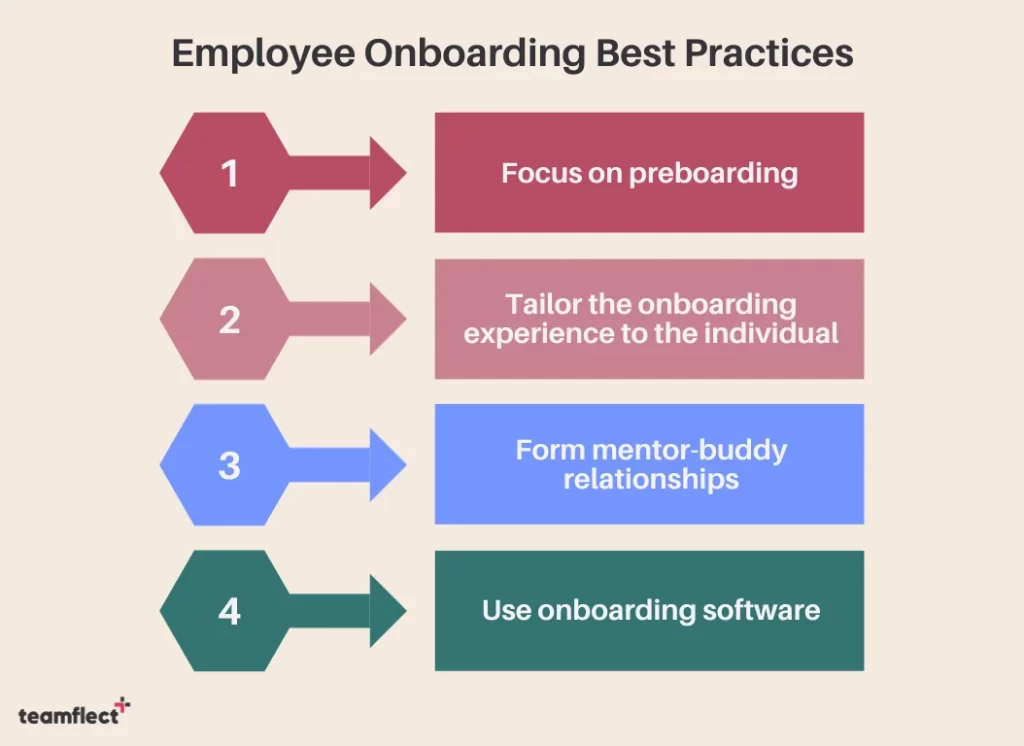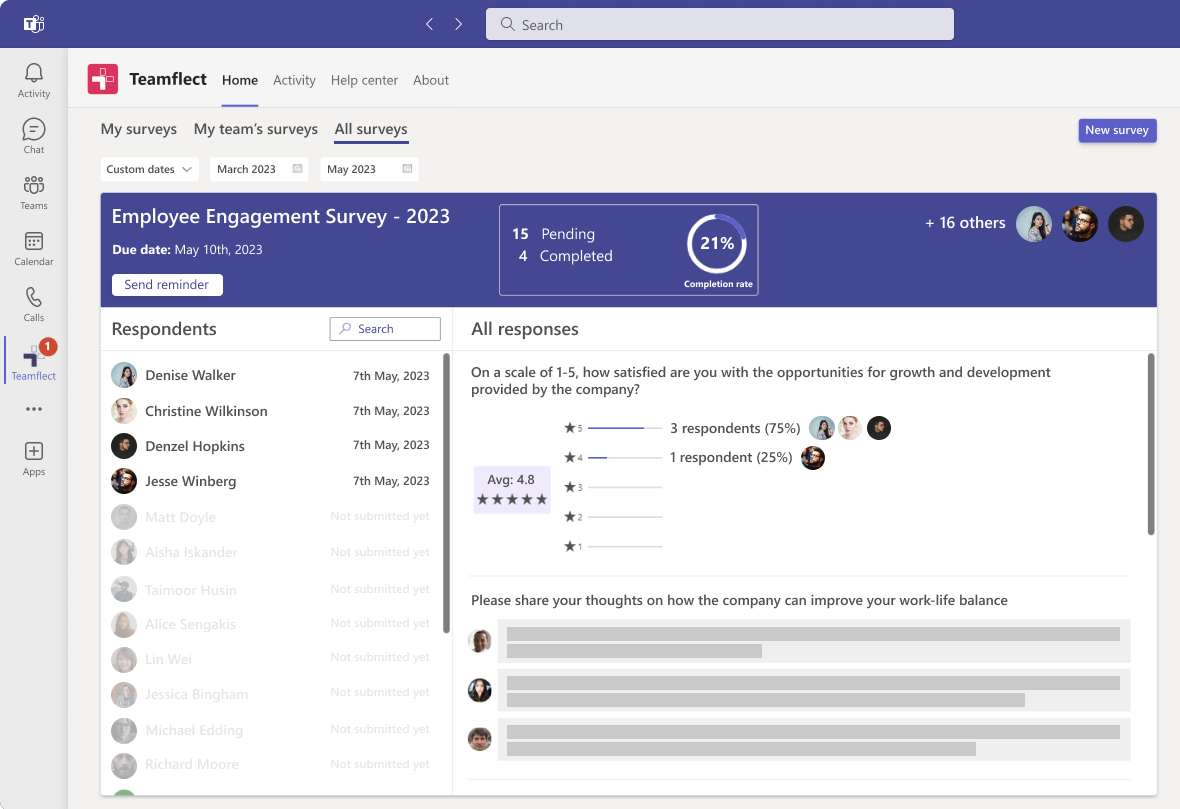Employee onboarding surveys are a key part of any onboarding program. But onboarding surveys are only as good as the onboarding survey questions you ask in them!
Creating your own onboarding survey for new hires can be challenging. That is why not only did we put together a list of the 60 best onboarding survey questions you can ask, but also the best practices surrounding employee onboarding surveys.
In this article, you will find onboarding survey questions for three separate occasions as well as tips and tricks into creating the best onboarding program for your new hires!
Table of Contents
What is an employee onboarding survey?
There isn’t a lot of reason to beat around the bush when it comes to onboarding surveys. At its core, an employee onboarding survey is a questionnaire designed for new hires, in order to gauge different variables during their onboarding process such as employee engagement, satisfaction, integration into company culture, and the overall effectiveness of the organization’s new hire onboarding programs.
Onboarding surveys when utilized in conjunction with employee onboarding templates, can greatly help with talent mapping, helping organizations identify high performers with ease.
Employee Onboarding Best Practices

While we have explored the best practices around onboarding new hires in previous articles, let’s take a brief detour and talk about some of the key best practices of employee onboarding:
1. Focus on preboarding
Initiating the onboarding process prior to the official start date of a new employee is an essential best practice that can have a significant influence on their overall experience and success within the company.
Pre-boarding plays a vital role in establishing a seamless transition and it helps new hires feel more supported even before physically entering the workplace or starting their profesional journey. A great way to boost the efficiency of your preboarding is to create an employee onboarding checklist and stick to it.
2. Tailor the onboarding experience to the individual
While we all enjoy feeling like we belong, there is a big difference between belonging and being put in a box. Every new hire is unique. They all bring something new to the table. That is why their onboarding processes can’t be expected to be the same.
Tailoring employee onboarding plans to the individual may seem easier said than done. After all, you don’t know these individuals completely.
The best way to customize your employee onboarding process is to study the data from your employee onboarding surveys and employee review templates and make changes based on those results.
3. Form mentor-buddy relationships
You can invest in all the fancy training programs in the world and non of them will be as helpful as a workplace buddy having the new hire’s back and showing them the ropes.
Creating buddy programs between veterans and new hires is a great way to ease your new employees into the organization while also showing your veteran employees that you respect their tenure and leadership skills.
4. Onboarding remote employees with onboarding software
When onboarding remote employees, it is crucial to invest in employee onboarding software. There are some incredible onboarding platforms out there that can help you with remote employee onboarding. In fact, we’ve listed some of them right here: 14 Best Employee Onboarding Software
The key is to pick the tool that makes life the easiest for you. The new hire onboarding software you pick should be fully integrated into your main communication platform. For example: If you use Microsoft Teams on a daily basis…
Best Employee Onboarding Software for Microsoft Teams: Teamflect

Teamflect is an all-in-one performance management software designed specifically to be integrated into Microsoft Teams. Teamflect has a wide array of features that make it the best Microsoft Teams employee onboarding platform such as:
- Automated onboarding tasks: Create onboarding tasks for any department of your choice and automate them so new hires receive their onboarding tasks automatically.
- Onboarding Surveys: Use Teamflect’s premade employee onboarding survey templates or create some of your own to conduct employee onboarding questionnaires inside Teams or Outlook. Oh, you can automate these surveys too!
- 30-60-90 Day Reviews: Conduct 30-60-90-day performance reviews through customizable performance review templates. No longer bother with Excel performance review templates. You guessed it. These reviews are also automatable!
- Mentorship & Buddy Programs: Create custom relationship labels between your employees such as “mentor/mentee” and initiate mentorship programs in your organization. Improve those programs with mentorship program reviews.
Some other helpful Teamflect features include but aren’t limited to:
- OKR Management
- Employee Recognition
- Customizable feedback template gallery
- Employee engagement surveys
- HR analytics
- And so much more!
The best part is, Teamflect is completely free for up to 10 users with full functionality. We aren’t talking about a limited trial period or a lite version with limited functionality!
This way you can try Teamflect out with 10 people for as long as you want, get their feedback, and then you can decide whether you want to invest in it or not!



